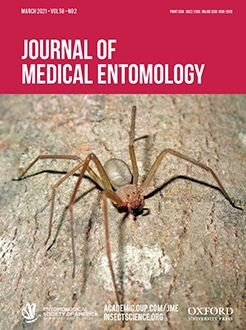The biophysical environment plays an important role in the spatio-temporal abundance and distribution of mosquitoes. This has implications for the spread of vectors and diseases they cause across diverse landscapes. Here, we assessed vector mosquito abundances in relation to large water bodies, from three malaria districts in a semi-arid environment. Furthermore, we explored thermal limits to activity of the dominant and most medically important malaria vector across malaria-endemic areas. Mosquitoes were trapped near permanent water bodies across different districts. Critical thermal limits (critical thermal-maxima and -minima) to activity of wild adults and 4th instar larvae Anopheles arabiensis (Diptera: Culicidae) were assessed. Our results showed that Anopheles spp. dominate mosquito communities across all three districts, but that their numbers were far greater in Okavango than in other regions. At the Okavango sites, the numbers of Anopheles spp. decreased with distance from main water source. Anopheles spp. sampled in this region comprised Anopheles gambiae (Giles,1902) and Anopheles funestus (Giles, 1900) species complexes, with the former dominating in numbers. Thermal activity assays showed An. arabiensis females had wider thermal tolerance windows than males while larval thermal activity limits differed significantly across space. These results confirm that the Okavango district should be prioritized for vector control measures. Moreover, intervention strategies should consider recommendations for proximity effects to large water bodies, given the differential risk associated with distance from water. The wider thermal window on female vectors has implications for possible future malaria transmission and diverse habitat utilization under changing environments.
How to translate text using browser tools
27 October 2020
Disease Vector Relative Spatio-Temporal Abundances to Water Bodies and Thermal Fitness Across Malaria Endemic Semi-Arid Areas
Mmabaledi Buxton,
Ryan J. Wasserman,
Casper Nyamukondiwa
ACCESS THE FULL ARTICLE
It is not available for individual sale.
This article is only available to subscribers.
It is not available for individual sale.
It is not available for individual sale.

Journal of Medical Entomology
Vol. 58 • No. 2
March 2021
Vol. 58 • No. 2
March 2021
An. arabiensis
emerging–reemerging infection
Plasmodium
thermal tolerance
vector-borne disease




